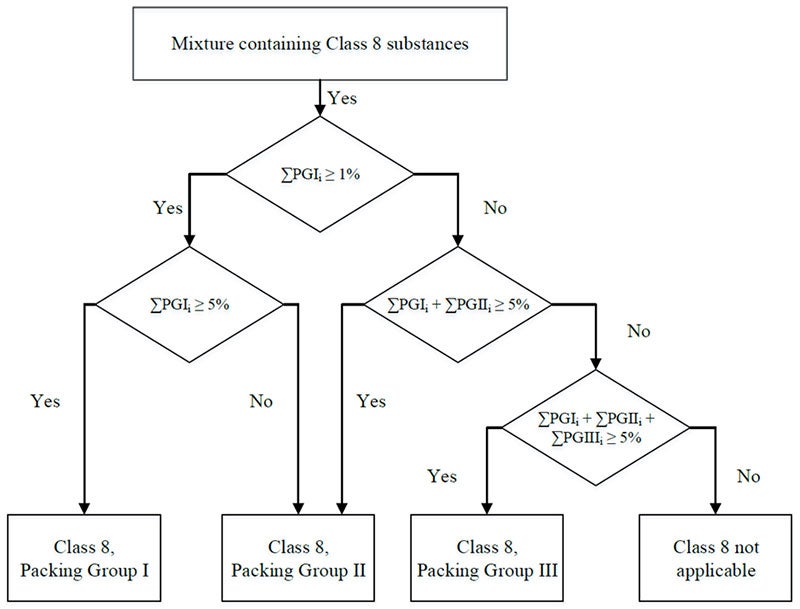April 9, 2019
ADR is an agreement between States that facilitates international movements of dangerous goods by road across Europe. This agreement adopts the provisions for classification, packaging, labeling, handling and moving of dangerous goods as established in the United Nations (UN) Recommendations on the Transport of Dangerous Goods Model Regulations. The United Nations (UN) Economic Commission for Europe (ECE) is responsible for the publication of ADR. It is updated and amended by a specialist working party (WP.15) of the ECE’s Committee on Inland Transport, implementing changes that have been introduced into the most recent revision of the UN Model Regulations. Revisions to the ADR agreement are published on a biennial (every two years) basis.
On January 1, 2019 the ADR Agreement instituted changes that will be mandatorily required on July 1, 2019. This article is intended to provide a summary of some of those key changes and the potential impacts on the transport of Dangerous Goods.
Articles containing dangerous goods
Background
Previously, the carriage of machinery or equipment containing dangerous goods, not mentioned specifically in the dangerous goods list, were exempt from the requirements of ADR (section 1.1.3.1 (b)) provided that measures had been taken to prevent any leakage of contents during normal conditions of carriage.
What has changed?
Following the publication of ADR 2019, this exemption (section 1.1.3.1 (b)) has been removed from the regulations. Any articles containing dangerous goods are now subject to the requirements of ADR.
The term “article” refers to machinery, apparatus or other devices containing one or more dangerous goods that are an integral element of the article, necessary for its functioning and that cannot be removed for the purpose of carriage.
Articles that meet this definition may now be classified under the proper shipping name for the dangerous goods they contain or according to new criteria concerning the classification of articles containing dangerous goods, introduced in section 2.1.5 of ADR 2019. Under this criteria, articles may be assigned to one of the new dangerous goods list entries, (UN Nos. 3537 to 3548) that have been introduced as part of the new classification requirements for articles containing dangerous goods.
Items that are shipped under one of the entries (UN Nos. 3537 to 3548) must be packaged in accordance with either of the new packing instructions P006 (packagings) and LP03 (large packagings), that have been introduced into ADR 2019, for articles containing dangerous goods.
Articles, that are not specifically mentioned on the dangerous goods list, and which contain dangerous goods either as residues or under the permitted limited quantity amounts may be assigned under UN3363, and provided they meet the requirements of new special provisions 301 and 672, may not be subject to any other provisions of ADR. The dangerous goods list entry for UN3363 had previously not been subject to ADR, and had only been applicable to the regulations that govern the transportation of dangerous goods by sea (IMDG) and air (IATA). UN3363 is now subject to all three modal regulations.
How will this impact companies shipping dangerous goods?
Companies that previously shipped articles containing dangerous goods under the exemption (1.1.3.1 (b)), will now be required to comply with the legal obligations established under ADR. This change in legislation may impact how a company packages, labels and ultimately ships their products.
However, given the significance of this change and the potential impact on companies, a transitional provision has been implemented into ADR, which allows companies to continue to ship machinery or equipment containing dangerous goods under the exemption previously included in section 1.1.3.1 (b) and thus continue to be exempt from the provisions of ADR until 31 December 2022, provided that measures have been taken to prevent any leakage of contents during normal conditions of carriage.
What steps should I take now?
It is recommended that companies check whether their products meet the definition of an article as described in section 2.1.5.1 of ADR and are not specifically listed in the dangerous goods list. Companies must then ensure that by the end of the transitional period, their products are classified in accordance with section 2.1.5 of ADR and are shipped under the appropriate UN number and compliant with the relevant packing instructions and labeling requirements.
Class 8 corrosive materials – New classification criteria!
Background
For many years, the established criteria for the classification of Class 8 corrosive materials, was solely based on available test data that determined the rate at which full thickness destruction of intact skin was produced. This method of classification had been adopted from the UN Model Regulations into the ADR Agreement and applied to substances, solutions and mixtures.
In contrast to transport legislation, the United Nations Globally Harmonized System (GHS), implemented in the EU through Regulation (EC) No 1272/2008 (CLP) has an established calculation method for the classification of corrosive mixtures, which is to be applied in the absence of test data.
In addition to the classification criteria adopted from the UN Model Regulations, ADR also stipulated that materials not classified as corrosive to skin or metal according to Regulation (EC) No 1272/2008 (CLP) may not be considered as Class 8 corrosive. In the absence of test data, companies would often use GHS classification information as a basis for determining the corrosivity of mixtures for transport.
What has changed in ADR 2019?
In accordance with the UN Model Regulation’s continued alignment with GHS, a step-wise approach to classify and assign packing groups of corrosive mixtures that was published in the 20th revised edition of the UN Model Regulations has now been introduced into ADR 2019. Transport’s alignment with GHS is also reflected in the newly adopted change in definition of the effect of corrosive materials from full thickness destruction of intact skin to irreversible damage of intact skin.
The new approach to classification is tiered, and is dependent upon the amount of information available for the mixture itself, for similar mixtures and for its ingredients. In situations where test data is available on the mixture as a whole, this must be used to classify and assign packing groups. In the absence of test data, if sufficient data is available on similar mixtures, then bridging principles may be applied to determine the classification. If information is only available on the components of the mixture, then the application of a new calculation method may be undertaken.
Classification derived through the new calculation method is based on the concentration of corrosive ingredients present in the mixture (Figure 1). Although the transport calculation method shares intentional similarities with the corresponding GHS calculation method, there are some apparent deviations that may result in differences between the outcomes of corrosivity classifications under GHS and ADR.
A scenario whereby GHS and ADR classifications may differ, exists when a mixture contains a packing group I (ADR)/Skin Corrosion Category 1A (GHS) ingredient between 1 and 5%. In this situation, the mixture would potentially be regarded as not corrosive to skin under GHS and merely a skin irritant, whereas under the new calculation method in ADR, the mixture would be classified as Class 8, Packing Group II.

Figure 1. Calculation method
How will this impact companies shipping dangerous goods?
In light of the differences between the corrosivity calculation methods under GHS and ADR, companies may find that their corrosivity classification or packing group under ADR may potentially change when reassessed under the new calculation method. This consequence may impact a product’s packaging and labeling as well as its ability to be shipped under limited quantity. Further impacts to the content of documentation such as dangerous goods notes (DGNs) and safety data sheets (SDSs) may also occur. Products previously not regarded as corrosive for transport may now be subject to ADR moving forward.
Although adopted by the UN Model Regulations and introduced into ADR, other countries are yet to implement this new corrosive classification criteria into their own road legislation. In fact, this new definition for corrosive effects has created some concern in the US as the Department of Transportation (DOT) deems it to be too extreme and are reluctant to implement it into law. It has also expressed further concern that many companies rely on publicly available data that may or may not be valid or based on actual tests under the new corrosive criteria.
The US DOT has only published a Notice of Proposed Rulemaking and has not published a final rulemaking noting what provisions of the changes introduced into the UN Model Regulations will be adopted for harmonization.
What steps should I take now?
It is recommended that companies check their product portfolio for mixtures that contain corrosive ingredients. Any identified products should be reassessed against the new classification criteria as detailed in section 2.2.8.1.6 of ADR. In the event of a classification change, the following should be addressed if necessary to ensure consistency with classification:
- Packaging
- Marking and labelling of container
- Section 14 of the SDS.
- Transport documentation (DGN)
Need to appoint a dangerous goods safety advisor
Background
In accordance with ADR, companies undertaking activities that include the carriage or the related packing, loading, filling or unloading of dangerous goods by road are required to appoint a dangerous goods safety adviser (DGSA). The role of a DGSA is to monitor a company’s activities involving the transportation of dangerous goods and ensure that they are compliant in accordance with the provisions of ADR. Previously, companies that would consign shipments of dangerous goods but were not actively involved in loading, packing, filling or unloading, such as office based consignors, were exempt from the requirement to appoint a DGSA.
What has changed in ADR 2019?
The requirement to appoint a DGSA has been amended in ADR 2019 and now extends to companies involved in the consigning of dangerous goods including office based consignors. Companies that meet this description are required to appoint a DGSA no later than 31 December 2022.
How will this impact companies shipping dangerous goods?
Companies that previously were not required to appoint a DGSA may now find themselves legally obliged to appoint a DGSA. This will require a company to either ensure that a suitable employee obtains a DGSA qualification or appoint a third party consultant to act as a DGSA on behalf of the company.
What steps should I take now?
It is recommended that companies check whether they are legally obliged to appoint a DGSA in accordance with section 1.8.3 of ADR 2019. If required, companies must check whether they currently have an employee that holds a valid DGSA qualification.
This article has served to highlight some of the major changes that have been introduced into ADR 2019 and the nature of their impact on companies involved in transporting dangerous goods. A copy of ADR 2019 with all amendments to the regulations both tracked and highlighted can be found at: http://www.unece.org/trans/danger/publi/adr/adr2019/track.html
Get connected with our sales team
Thanks for your interest in our products and services. Let's collect some information so we can connect you with the right person.

